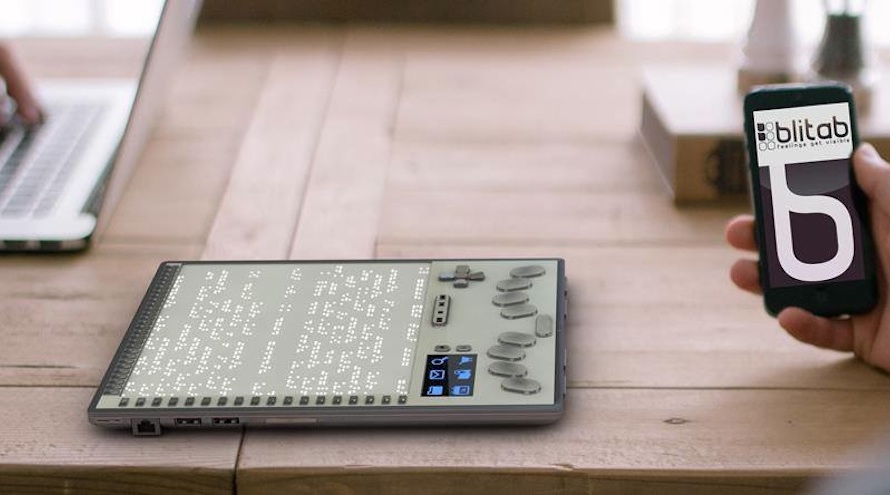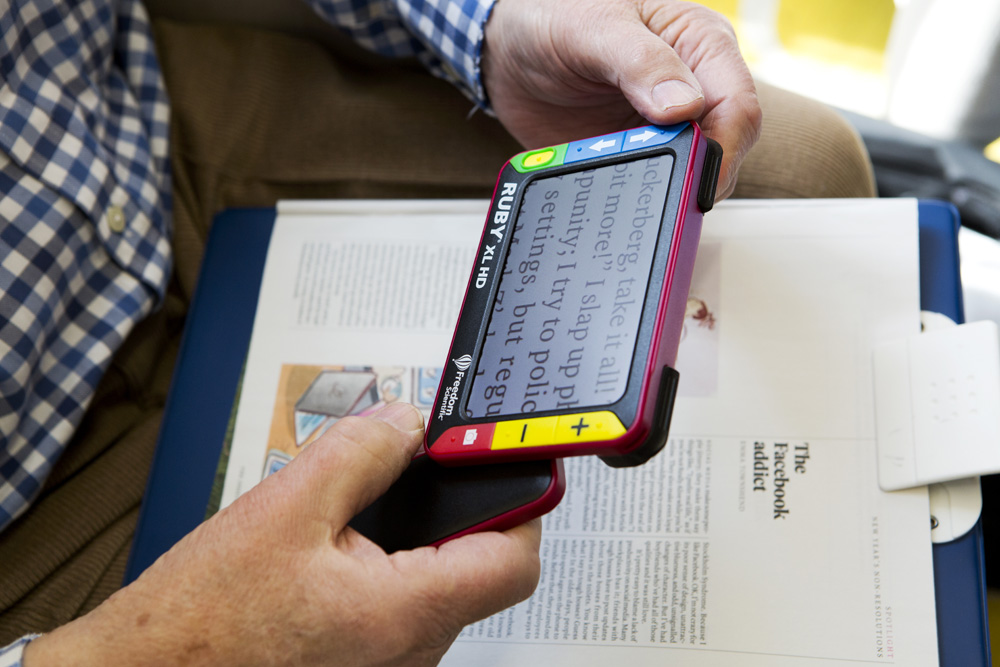OCR Devices for the Blind: Transforming Text into Speech with Ease
Wiki Article
Empowering Freedom With Assistive Technology for the Blind
The integration of assistive technology into the lives of individuals with visual disabilities represents a considerable innovation in advertising independence and self-sufficiency. From innovative display readers to advanced wise walking canes, these devices not only boost day-to-day navigating and interaction yet also empower users to engage meaningfully in various facets of life. As we explore the myriad benefits and real-world applications of these technologies, it becomes vital to examine the underlying factors that contribute to their effectiveness and the capacity for future growths in this essential area.Review of Assistive Modern Technology

The advancement of assistive technology is based in concepts of inclusivity and empowerment. Advancements in software program, equipment, and sensory enhancements give users with alternatives customized to their particular demands. From display viewers that convert text to speech, to responsive tools that share info with touch, these tools change the means people engage with their surroundings.
Along with sensible applications, assistive technology fosters better social incorporation and involvement in various markets, including education and work (Screen readers for the blind). As r & d continue to advance, the capacity for assistive technology to better boost the lives of aesthetically impaired people remains encouraging, leading the means for an extra equitable culture where everyone can flourish
Kinds of Assistive Devices
A selection of assistive tools have actually emerged to sustain individuals with aesthetic disabilities, each designed to satisfy details requirements and enhance everyday performance. These devices range from low-tech remedies to state-of-the-art innovations, supplying varied alternatives for individuals.Low-tech tools include magnifiers and large-print materials that aid in reading and writing. Braille devices, such as Braille stylus pens and slates, allow responsive analysis and interaction. Positioning and mobility aids, like white walking sticks, aid customers navigate their atmosphere securely.
On the greater end of the range, digital magnification systems and screen visitors supply substantial support. Electronic magnifiers allow customers to enlarge text and images on screens, while screen visitors transform digital web content right into synthesized speech, facilitating accessibility to details on smartphones and computer systems.
Mobile phone applications additionally play an essential duty, offering attributes like message acknowledgment and navigation assistance. Wearable innovation, such as wise glasses outfitted with enhanced truth, is becoming an appealing device to enhance situational understanding.
Advantages of Assistive Technology
The assimilation of assistive modern technology significantly improves the high quality of life for people with aesthetic disabilities. These modern technologies empower users by advertising freedom, allowing them to browse their atmospheres better and do everyday tasks with better convenience. Screen visitors and magnifying software allow people to access electronic information, cultivating specialist and academic opportunities that might have formerly been out of reach.In addition, assistive gadgets such as smart walking canes and GPS applications provide real-time navigation assistance, improving movement and safety and security. This boosted autonomy not only enhances self-esteem Assistive technology for the blind however also encourages social involvement, enabling customers to participate even more fully in their areas.
Assistive innovation likewise facilitates interaction, aiding customers get in touch with others with voice recognition and text-to-speech applications. This ability is vital for preserving partnerships and accessing important details.
Furthermore, the modification options offered with many assistive technologies make sure that customers can tailor gadgets to their details requirements, even more improving use and performance. In general, the benefits of assistive technology for people with aesthetic problems are extensive, advertising a more comprehensive culture where everyone can pursue their desires and objectives.
Study and Success Stories
Highlighting the transformative influence of assistive innovation, many study highlight exactly how people with visual impairments have actually successfully incorporated these tools into their every day lives. One engaging example entails an university student that utilized display reading software program to browse academic products and on the internet resources properly. This innovation not only promoted her education yet also enhanced her self-confidence in taking part in discussions and team projects.One more study features an expert that employs a smart device application developed for navigating and object acknowledgment. By utilizing this app, he has actually regained autonomy in both his individual and work atmospheres, allowing him to commute separately and involve with colleagues a lot more efficiently.
Additionally, a retired person shared her experience with braille e-readers, which enabled her to access a large selection of literature and remain connected with her community with publication clubs.
These success stories emphasize the crucial duty of assistive modern technology in promoting self-reliance, enhancing lifestyle, and advertising social assimilation for individuals with visual disabilities (Voice-activated assistive devices). By welcoming these innovative tools, users can conquer difficulties and confiscate possibilities that add to their individual and professional fulfillment

Future Patterns in Assistive Modern Technology
Development in assistive modern technology is poised to redefine the landscape of support for individuals with aesthetic impairments. Emerging patterns stress the integration of synthetic knowledge (AI) and artificial intelligence, which improve the capability of devices that help with navigating and details ease of access. For example, AI-driven applications are now qualified of interpreting aesthetic data in real-time, allowing users to involve with their environment much more separately.Furthermore, the advancement of wearable modern technology is progressing quickly. Smart glasses geared up with enhanced reality (AR) can provide audio descriptions of environments, changing how users connect with public areas. These gadgets not only advertise freedom but also foster social incorporation.
In Addition, the Web of Things (IoT) is making homes smarter, permitting for smooth connectivity in between daily appliances and assistive tools. This connectivity equips individuals by making it possible for automatic responses and voice-activated controls customized to specific needs.
Verdict
In final thought, assistive technology plays a crucial role in empowering people with visual impairments by improving their independence and engagement with their environments. The diverse series of gadgets and applications available not just helps with navigating and communication however also promotes social assimilation and opportunities for expert and individual growth. As improvements proceed in this field, the capacity for boosting the high quality of life for those with aesthetic problems will increase, fostering greater freedom and empowerment.
Report this wiki page